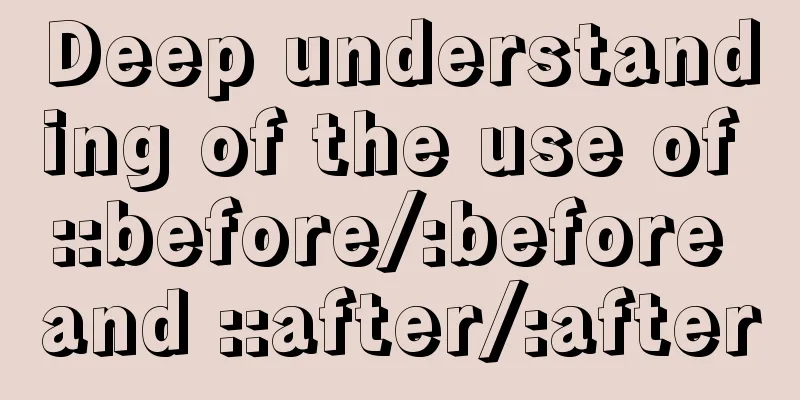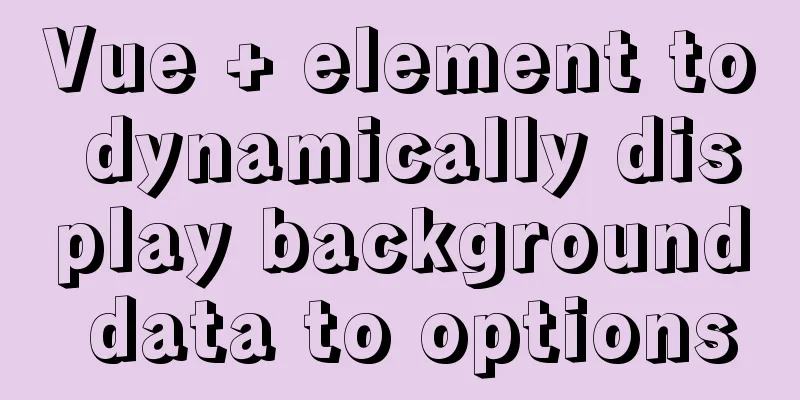In-depth explanation of various binary object relationships in JavaScript

PrefaceModern JavaScript has to face more complex scenarios, and there are more types of data transmission, including binary transmission. In order to facilitate data processing and improve efficiency, the ArrayBuffer object was created. However, when using it, you will find that there are not only ArrayBuffer, but also a series of objects such as TypedArray, DataView, Blob, FileReader, etc., which makes people confused about the relationship between them? Why are there so many objects? I searched for information with these questions in mind and tried to sort out the relationships. Relationships between various objects ArrayBufferArrayBuffer is the most basic binary object in JavaScript, which describes a continuous memory space in bytes. const buffer = new ArrayBuffer(32); In this way, we have created a 32-byte memory area, and we can use buffer.byteLength to check its length. ArrayBuffer objects can do very little and are not editable. If you need to edit data, you need to use two other objects, TypedArray and DataView. TypedArrayTypedArray is a typed array. TypedArray itself does not store any data, but is specifically used to view ArrayBuffer data. That is why it is called TypedArray. It is not the name of a specific constructor, but a general name for a group of constructors.
When creating, you can pass in length, typedArray, ArrayBuffer, and array. Of course, you can pass nothing in. const uint1 = new Uint8Array(8); const uint2 = new Uint16Array(new Uint8Array(8)); const uint3 = new Uint8Array(new ArrayBuffer(8)); const uint4 = new Uint8Array([1, 2, 3]); const uint5 = new Uint8Array(); In the above typedArray, except for the ArrayBuffer passed in during creation, a new ArrayBuffer will be created at the bottom layer during the new process. You can use arr.buffer to access the ArrayBuffer it refers to. All operations on ordinary arrays can be used in TypedArray. But because ArrayBuffer describes a continuous memory range, we cannot delete a value and can only assign it to 0. There is no way to use the concat method. Uint8ClampedArrayUint8ClampedArray is a bit special, and handles positive and negative overflows differently. For other out-of-bounds data, only the rightmost (lowest bit) portion is retained and the overflow data is discarded. However, Uint8ClampedArray saves out-of-bounds data as 255 and negative numbers as 0. Conversion between charactersTypedArray does not pass strings directly, so they need to be transcoded first. String → Unit8Array
const string = "Hello";
Uint8Array.from(string.split(""), (e) => e.charCodeAt(0));
Unit8Array → String
// Use TextDecoder object const u8 = Uint8Array.of(72, 101, 108, 108, 111);
new TextDecoder().decode(u8);
// Convert using fromCharCode const u8 = Uint8Array.of(72, 101, 108, 108, 111);
Array.from(u8, (e) => String.fromCharCode(e)).join("");
DataViewExcept for the uint2 variable, all the above data are of a single data type. The uint2 object stores two types of data in one section of memory, which is called a composite view. The data types in JavaScript are often not so simple, and it would be more troublesome to operate with only TypedArray, so there is a DataView object. DataView has more operation methods than TypedArray. const buffer = new ArrayBuffer(8); const dataView = new DataView(buffer); Provides getInt8, getUint8, getInt16, getUint16, getInt32, getUint32, getFloat32, getFloat64 methods. There are two parameters, the first one is the section position, and the second one is the byte order, which is not required. The return value is the byte data at the corresponding position. const d1 = dataView.getUint8(1); const d2 = dataView.getUint8(1, true); The byte position is easy to understand, and the byte order can be read in "Understanding Byte Order". In general, it is:
By default, big endian byte order is used. If you want to use little endian byte order, you need to pass true. In this way, we have a basic binary reading and writing solution. However, actual application scenarios often involve more complex data, so objects such as Blob and FileReader are derived for specific scenarios. BlobBlob is the abbreviation of Binary Large Object. The difference between ArrayBuffer and Blob is that ArrayBuffer is pure binary data, while Blob is binary data with MIME type. And it is easy to generate Blob objects from String, ArrayBuffer, TypedArray, DataView, and Blob.
const blob1 = new Blob(["hello"], { type: "text/plain" });
const blob2 = new Blob([new Uint8Array([72, 101, 108, 108, 111]), " ", "world"], { type: "text/plain" });
property:
method:
URLDuring development, we get binary data of the image, which we can convert into base64 and write into src, but if the amount of data is large, or video data, it will exceed the allowed length. We can use URL.createObjectURL to easily create a resource URL. const url = URL.createObjectURL(blob1); A resource URL similar to blob:https://example.com/a6728d20-2e78-4497-9d6c-0ed61b93f11e will be generated, which can be directly written into src for use. Use URL.revokeObjectURL(url) to destroy its reference and release its memory usage when not in use. Data readingIf we want to view the data, there are two ways. The first method uses the Response object to directly read string data or arrayBuffer data. const responseText = await new Response(blob2).text(); const responseBuf = await new Response(blob2).arrayBuffer(); The second method uses the FileReader object.
const reader = new FileReader();
reader.onload = function (e) {
console.log(reader.result);
};
reader.readAsText(blob2);
FileFile inherits from Blob and adds file-related attribute information.
FileListThe FileList object is a collection of File objects. Usually appears in:
property:
method:
FileReaderFileReader was mentioned in the Blob section. In fact, the FileReader object is specifically used to read Blob objects, including extended File objects. property:
event:
method:
As in the example above, the data is returned in text form:
const reader = new FileReader();
reader.onload = function (e) {
console.log(reader.result);
};
reader.readAsText(blob2);
Related Materials
SummarizeThis concludes this article about various binary object relationships in JavaScript. For more relevant JS binary object relationship content, please search for previous articles on 123WORDPRESS.COM or continue to browse the following related articles. I hope everyone will support 123WORDPRESS.COM in the future! |
<<: Detailed explanation of Mencached cache configuration based on Nginx
>>: MySQL uses mysqldump+binlog to completely restore the deleted database principle analysis
Recommend
Docker deploys mysql to achieve remote connection sample code
1.docker search mysql查看mysql版本 2. docker pull mys...
Detailed steps for implementing timeout status monitoring in Apache FlinkCEP
CEP - Complex Event Processing. The payment has n...
How to configure nginx+php+mysql in docker
First, understand a method: Entering a Docker con...
Practical experience of implementing nginx to forward requests based on URL
Preface Because this is a distributed file system...
HTML form and the use of form internal tags
Copy code The code is as follows: <html> &l...
Detailed explanation of MySQL database addition, deletion and modification operations
Inserting Data insert into table name (column nam...
Node script realizes automatic sign-in and lottery function
Table of contents 1. Introduction 2. Preparation ...
Use of filter() array filter in JS
Table of contents 1. Introduction 2. Introduction...
Designing the experience: What’s on the button
<br />Recently, UCDChina wrote a series of a...
Steps for IDEA to integrate Docker to achieve remote deployment
1. Enable remote access to the docker server Log ...
Vue implements calling PC camera to take photos in real time
Vue calls the PC camera to take pictures in real ...
Detailed steps to install MySQL on CentOS 7
In CentOS7, when we install MySQL, MariaDB will b...
CSS3 mobile vw+rem method to achieve responsive layout without relying on JS
1. Introduction (1) Introduction to vw/vh Before ...
Detailed explanation of ActiveMQ deployment method in Linux environment
This article describes the deployment method of A...
How to use cutecom for serial communication in Ubuntu virtual machine
Using cutecom for serial communication in Ubuntu ...









